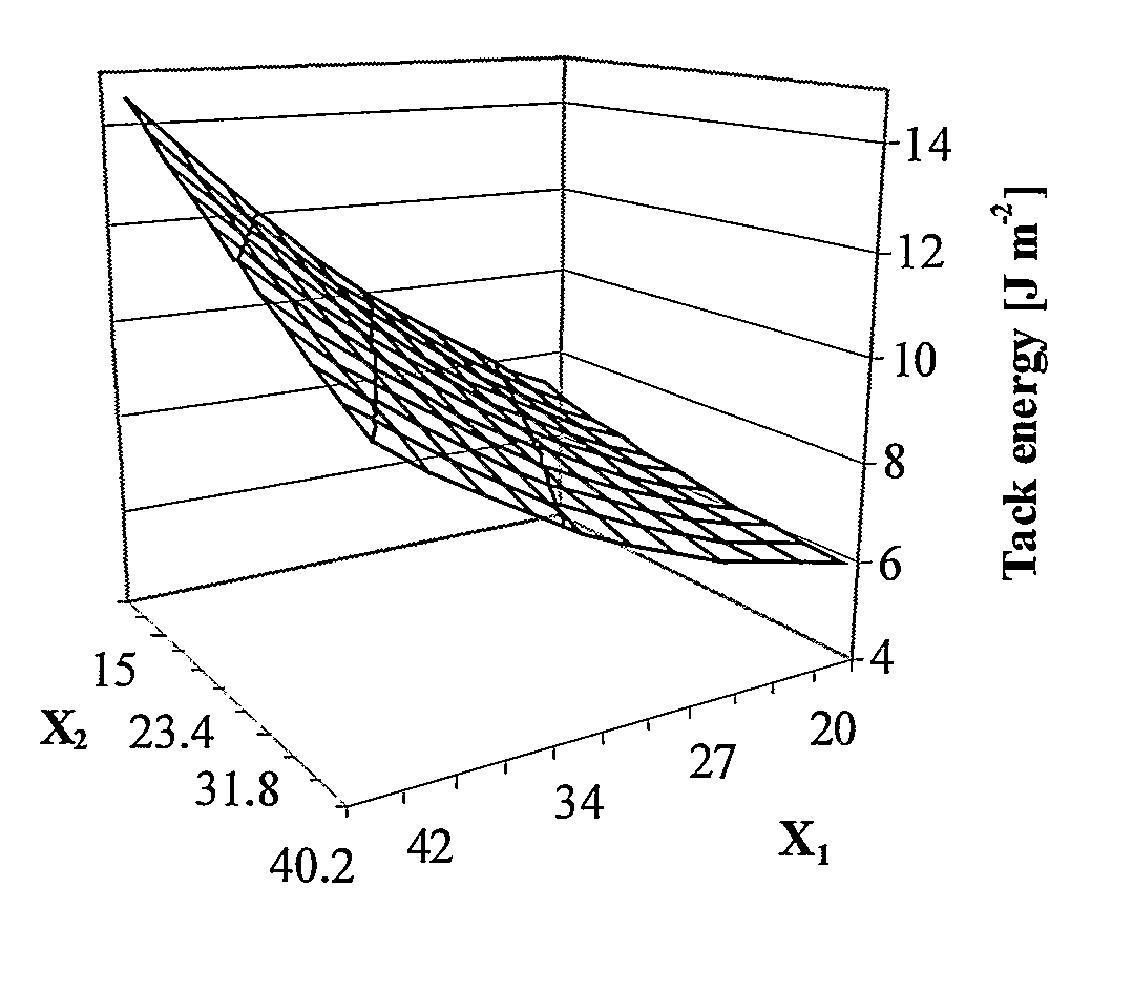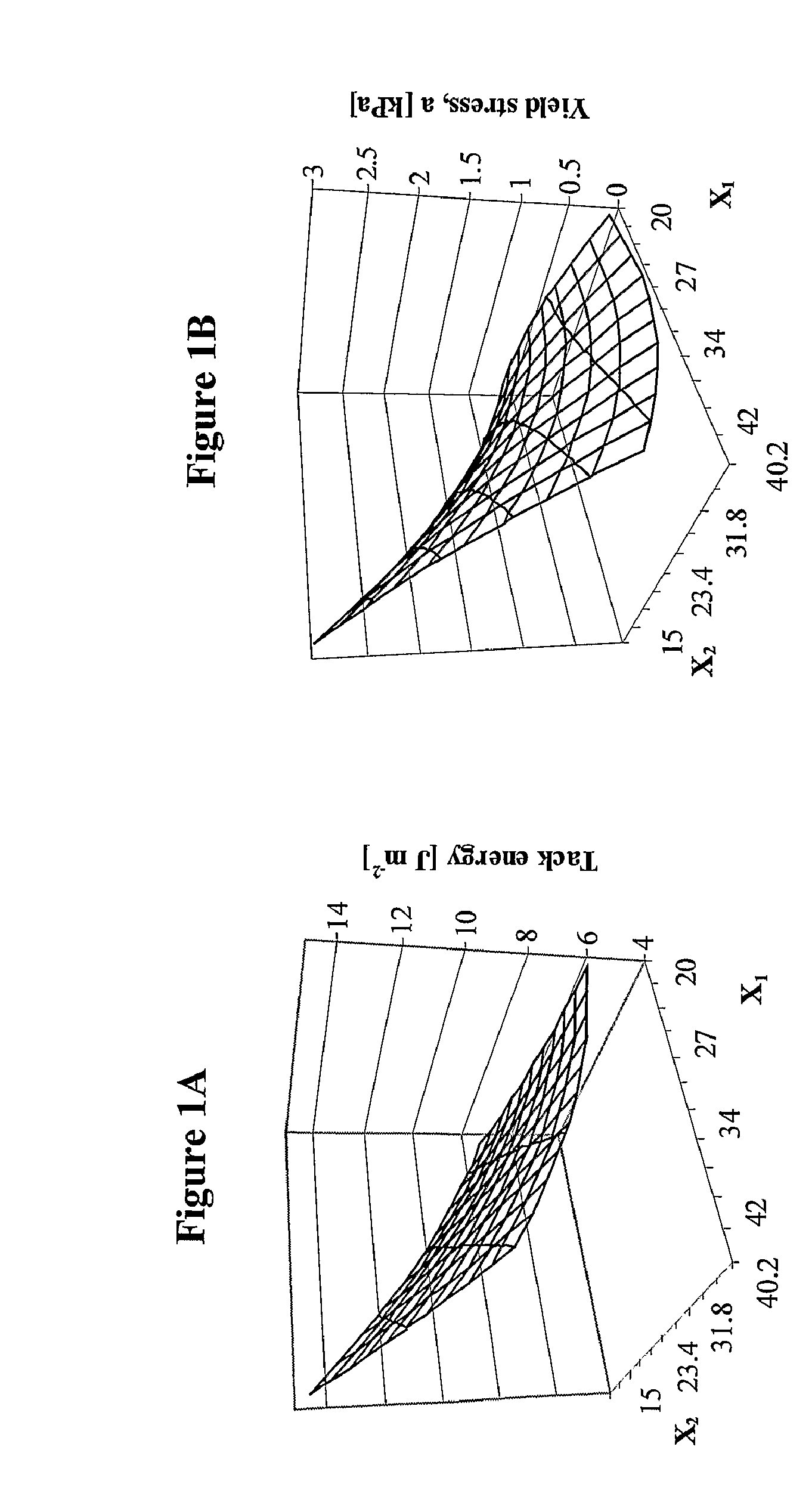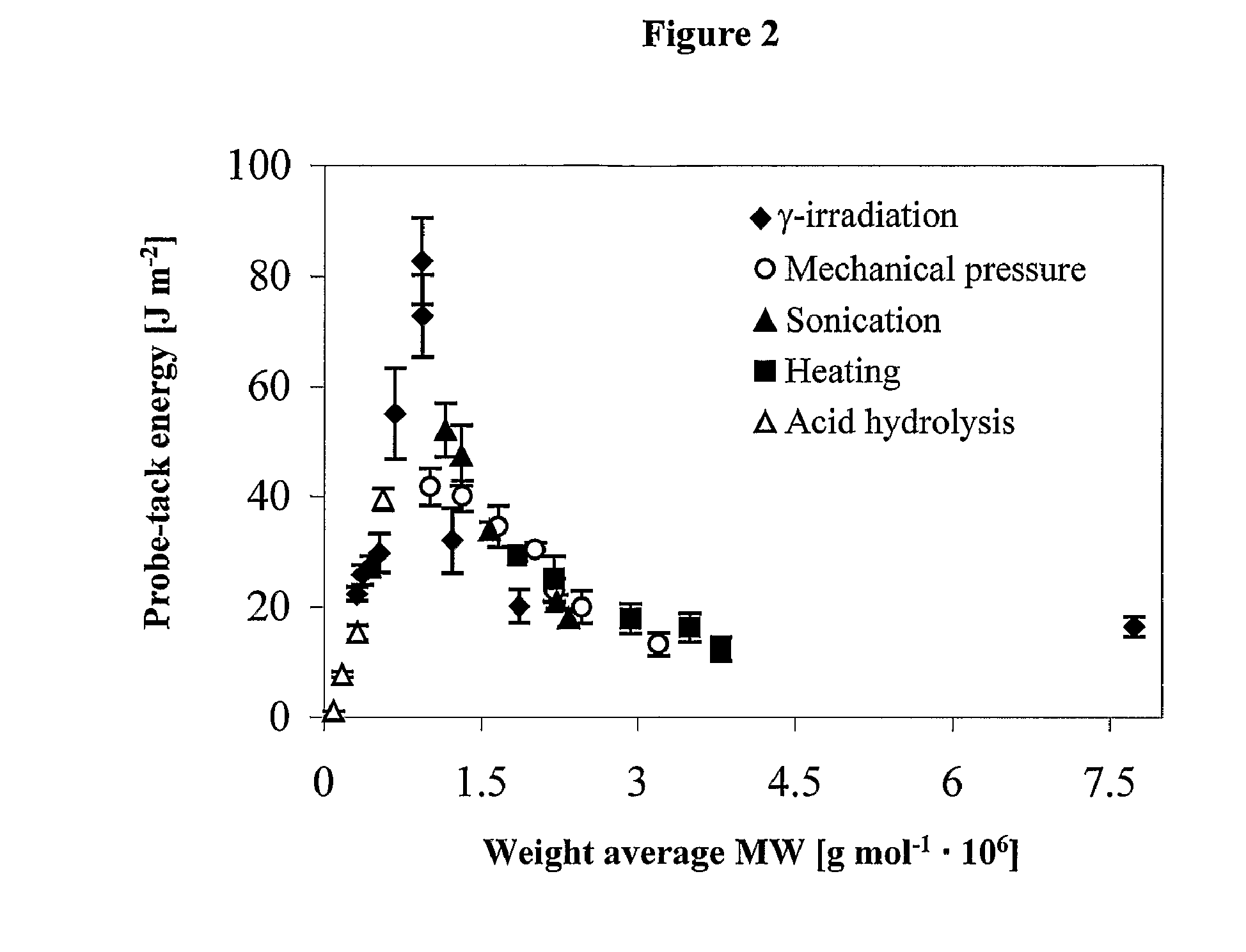Depolymerized polysaccharide-based hydrogel adhesive and methods of use thereof
a polysaccharide and hydrogel technology, applied in the field of depolymerized polysaccharide-based hydrogel adhesives, can solve the problems of limiting the type of active agents that can be incorporated, reducing the electrical conductivity potential of iontophoresis, increasing the risk of microbial infection, etc., and achieves remarkably predictable psa properties, simple and cost-effective manufacturing processes, and improved adhesion performance.
- Summary
- Abstract
- Description
- Claims
- Application Information
AI Technical Summary
Benefits of technology
Problems solved by technology
Method used
Image
Examples
example 1
Probe Tack Energy and Yield Stress of Unmodified (Native) Polysaccharides
[0156] Hydrogels comprising varying amounts of water and native Sterculia urens polysaccharide were prepared and tested for probe tack energy and yield stress.
[0157]FIG. 1 shows 3D graphs representing response surface methodology for optimization of the water and Sterculia urens polysaccharide ratio. Parameters used: probe tack energy and yield stress (rigidity) are calculated from a 3-parameter power-law model. Probe: Aluminum, diameter: 22 mm; Bonding: 1N; 70 mm / min; Dwell-time: 1s; Debonding: 600 mm / min.
[0158] In general, an increase in the water content to a maximum volume resulted in an increase of swelling around acetyl groups, leading to the highest viscosity during the coating process. A combination of maximum water content and minimum polysaccharide content results in reduced rigidity and decreased tack. Maximal tack energy is attained with a maximal polysaccharide concentration and minimal amount o...
example 2
Hydrogel Prepared with Type I Modified Polysaccharide
[0159]
ComponentSpecific Component% (w / w)PSSterculia urens, MW: 106 Daltons26Non-solventpropylene glycol30Solventdeionized water20Humectantglycerol24
[0160] The polysaccharide powder (Karaya, M W 9.5×106) was depolymerized by gamma irradiation in a continuous cobalt 60 irradiator at doses of 1-70 kGy. The irradiation process was performed according to “Sterilization of health care products-requirements for validation and routing control-radiation sterilization” (ANSI / AAMI / ISC 11137:199595).
[0161] Other treatments (sonication, mechanical pressure, heating) were tested following dispersion of native powder in water.
[0162] The final product was manufactured by first mixing the PS (200 micron particle size, MW 0.1−9.5×106) with the non-solvent for the polysaccharide at room temperature (25° C.) until full dispersion was attained (Phase I). In parallel, the solvent was stirred with the humectant (Phase II). Both phases were stored at ...
example 3
Hydrogel Prepared with Type I Modified Polysaccharide
[0165]
ComponentSpecific Component% (w / w)PSS. urens, MW: 7.7 × 106 Daltons13PSS. urens, MW: 3 × 105 Daltons13Non-solventpropylene glycol30Solventdeionized water20Humectantglycerol24
[0166] The procedure set forth in Example 1 is used with appropriate substitution of quantities to prepare this formulation. To improve adhesion performance, combinations of low and high molecular weights are employed. FIG. 4 shows that by increasing the proportion of a low molecular weight fraction relative to a high molecular weight fraction it is possible to increase tack energy to the same values as found for the maximum (FIG. 3) for hydrogels made of a single fraction with intermediary molar mass (˜1×106 Daltons) while maintaining adhesive failure. Probe tack energy and tangent δ for hydrogels composed of low, Fraction A (3×105 Daltons) and high, Fraction B (4.4×106 Daltons) molecular weight blends of S. urens polysaccharide. (Aluminum probe, diame...
PUM
| Property | Measurement | Unit |
|---|---|---|
| average molecular weight | aaaaa | aaaaa |
| molecular weight | aaaaa | aaaaa |
| molecular weight | aaaaa | aaaaa |
Abstract
Description
Claims
Application Information
 Login to View More
Login to View More - R&D
- Intellectual Property
- Life Sciences
- Materials
- Tech Scout
- Unparalleled Data Quality
- Higher Quality Content
- 60% Fewer Hallucinations
Browse by: Latest US Patents, China's latest patents, Technical Efficacy Thesaurus, Application Domain, Technology Topic, Popular Technical Reports.
© 2025 PatSnap. All rights reserved.Legal|Privacy policy|Modern Slavery Act Transparency Statement|Sitemap|About US| Contact US: help@patsnap.com



